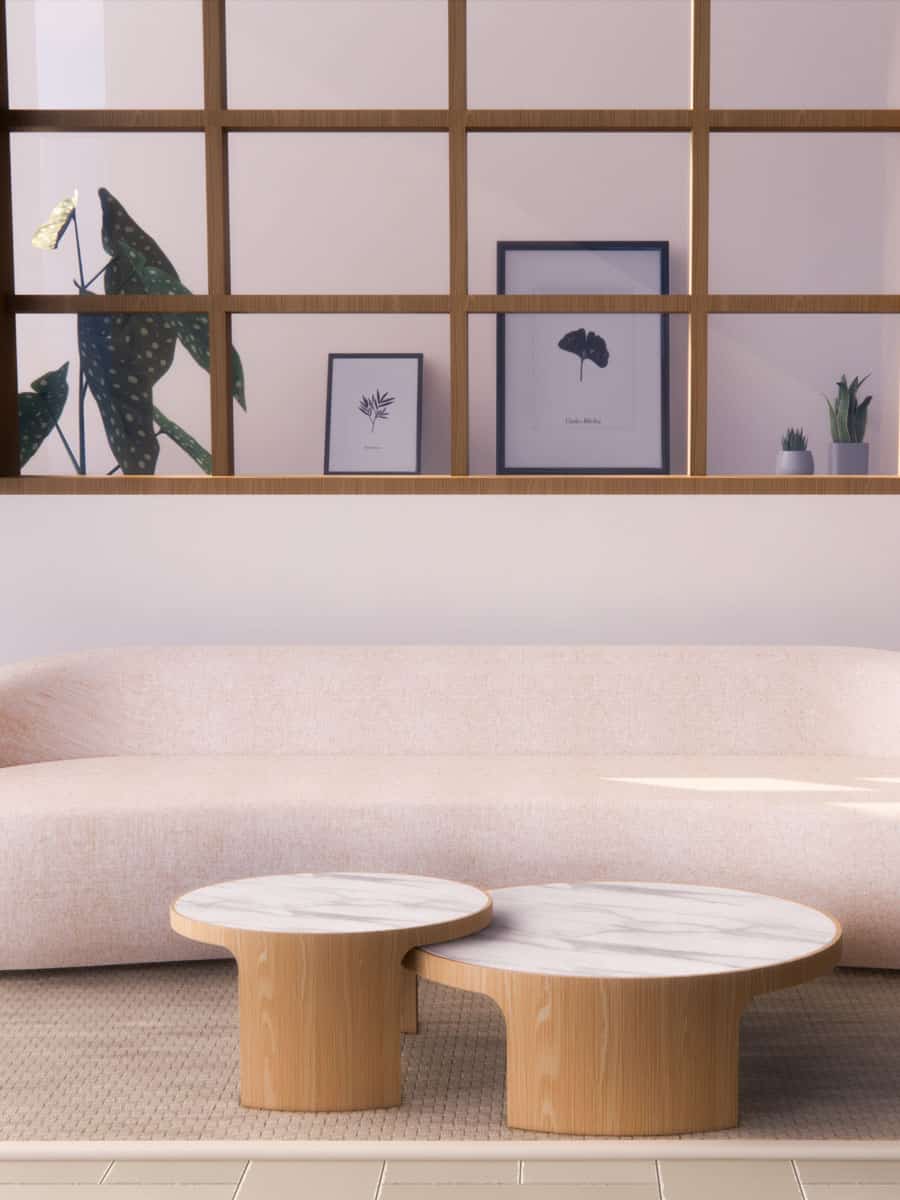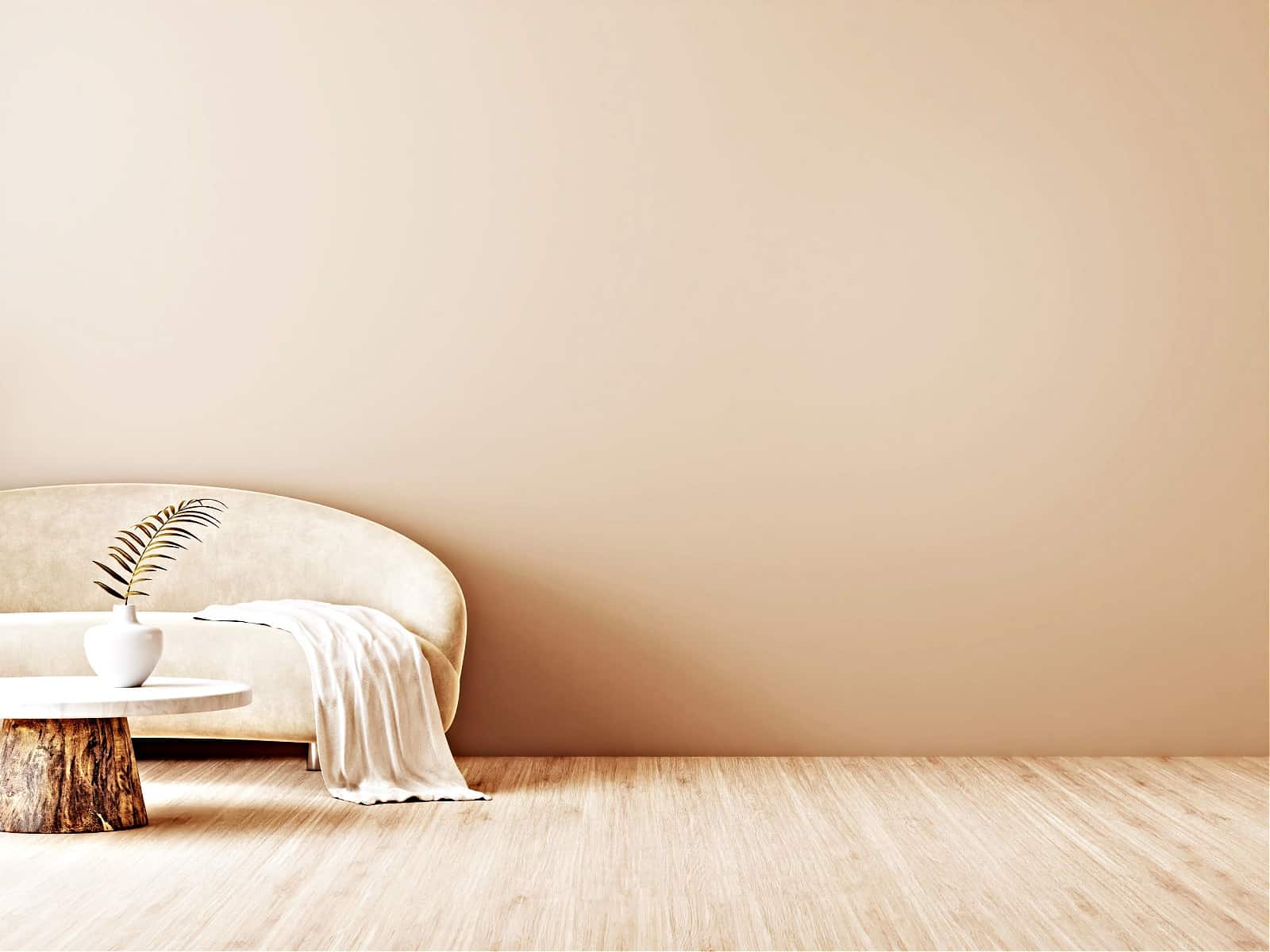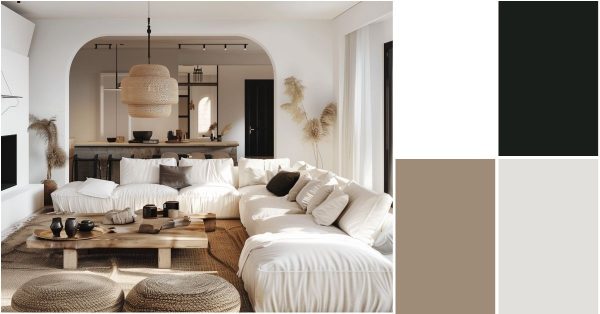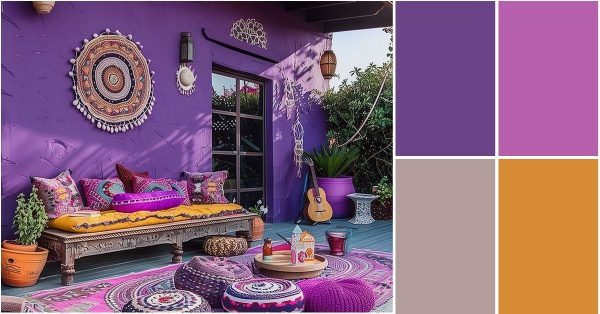Are you eager to get into the world of boho-chic? It's all about mixing and matching patterns, textures, and colors to create a space that's uniquely yours.

Ready to infuse your home with personality and flair? Follow these seven pro tips to master the boho look and turn your space into an eclectic oasis.
1. Start with a Neutral Base
A neutral backdrop lets your patterns stand out. It keeps the room from feeling too busy. Think of it as the room's foundation.
Types of Neutrals: You're not just stuck with beige. Light greys, off-whites, and soft taupes also work well. The goal is to pick a shade that brings warmth or coolness to your room, depending on its natural light.

Choosing Your Neutral:
- Light Rooms: If your room gets lots of sun, cooler neutrals like light grey can make it feel balanced.
- Darker Rooms: In less sunny spaces, warmer tones like beige add coziness.
Applying Neutrals:
- Furniture: Big pieces like sofas or chairs in neutral colors anchor your space.
- Rugs: A solid-colored neutral rug defines areas and adds comfort.
- Walls: Painting walls in a neutral tone provides a subtle backdrop for your decor.
For more inspiration on bringing a boho vibe right from the doorstep, check out our 11 Rustic Boho Entryway Design Inspirations.
2. Play with Scale
Mixing large, medium, and small patterns adds depth and interest to your room. It keeps the design dynamic and balanced.
How to Mix Scales:
- Start Large: Choose one large pattern for a key item, like a rug. This sets the room's tone.
- Go Medium: Add medium-sized patterns through items like curtains or throws. They should complement, not clash.
- Finish Small: Use small patterns for details like pillows or decorations. They add texture without overwhelming.
Quick Tips:
- Keep Colors Consistent: Use similar colors across patterns for harmony.
- Spread Patterns Out: Place patterns throughout the room to engage the eye.
- Simplify Your Choices: Stick to a few pattern sizes to avoid clutter. Aim for a mix that includes all three scales without overwhelming the space.
Example Approach:
A room might feature a bold, large-patterned rug, curtains with a less dominant medium pattern, and small-patterned accents like throw pillows and tabletop decor.
3. Stick to a Consistent Color Scheme
A unified color scheme ensures your mix of patterns feels intentional and cohesive. It’s what makes your space look put together, not chaotic.
How to Choose Your Colors:
- Find Inspiration: Use an item you love as the starting point for your palette.
- Pick Color Families: Decide between warm (reds, oranges, yellows) for coziness or cool (blues, greens, purples) for calm. Include neutrals for balance.
- Set Core and Accent Colors: Choose 2-3 main colors for large items and 1-2 accents for small details.
Applying Your Scheme:
- Distribute Wisely: Use core colors in big pieces like walls and rugs. Add accent colors in accessories.
- Consider Material: Different materials can affect how a color appears, adding depth to your palette.
Creating Balance:
- Repeat Colors: Echo colors in various elements to tie the room together.
- Mix Warm and Cool: Balance your primary color tone with elements from the opposite spectrum to keep the space inviting.
Example in Action:
A living area might feature a soft gray base accented with navy on a feature wall and mustard in cushions and decor. This combination keeps the space grounded but lively.
4. Mix Different Types of Patterns
Blending various patterns enriches your boho-chic style. Combine organic shapes (like florals and leaf motifs) with geometric forms (such as stripes and circles) for a dynamic look.
How to Combine Patterns:
- Start with Nature: Begin with nature-inspired patterns to set a soft, welcoming base.
- Add Structure with Geometrics: Introduce geometric patterns for contrast and visual structure.
- Bridge with Abstracts: Use abstract designs to connect and smooth the transition between organics and geometrics.
Simple Steps for Harmony:
- Mix Sizes: Pair bold patterns with smaller ones to balance the visual weight.
- Unified Colors: Keep colors consistent across patterns for cohesion.
- Spread Patterns Evenly: Ensure patterns are distributed throughout the space, avoiding cluttered or bare spots.
Practical Tip:
Use cushions, rugs, and wall art to easily incorporate a variety of patterns without commitment. Aim for a balanced mix that feels coordinated but not matchy-matchy.
Example:
A room might feature a bold floral curtain, striped throw pillows, and a geometric rug, all tied together by a common color scheme.
If you're thinking of applying these ideas to smaller areas, our 11 Boho Bedroom Design Ideas For Small Spaces offers great tips on maximizing style in cozy spaces.
5. Use Textures as Patterns
Texture in interior design isn't just about how things feel—it's about adding visual depth and interest.
In a boho-chic space, textures bring warmth, contrast, and a layer of sophistication that complements visual patterns, acting as a pattern in their own right.
Selecting Textures:
- Natural Fibers: Start with materials that add warmth and a natural appeal, like wool, cotton, or linen. These can serve as a cozy backdrop for more intricate patterns.
- Rich Details: Incorporate luxurious textures like silk or velvet to add a touch of elegance and depth. These materials can catch the light and add a subtle sheen to your space.
- Artisan Touches: Macrame, jute, rattan, and bamboo add a crafted, earthy dimension. They introduce a tactile quality that invites touch and adds a unique visual layer.
How to Incorporate Textures:
- Layering: Combine different textures through layering. A wool rug on the floor, silk pillows on the couch, and a macrame wall hanging can coexist to create a richly textured space.
- Balancing Soft and Rough: Mix soft and plush textures with rougher, more rustic ones for balance. This contrast enhances the tactile experience of the room.
- Textured Accents: Use textured accents like throws, baskets, and rugs to introduce pattern-like depth without overwhelming the space with too many visual patterns.
Tips for Textural Harmony:
- Consider Color: While textures add depth, coordinating their colors with the rest of your decor ensures the room feels unified.
- Play with Light: Remember, textures interact with light differently. Shiny textures reflect light, while matte textures absorb it, adding to the room's overall mood.
Example in Action: Imagine a living space where a chunky knit throw invites coziness, a silk runner adds a hint of luxury, and a rattan chair introduces natural texture.
Together, these elements create a layered look that’s rich in texture and personality, proving that textures can be as impactful as patterns in defining a space's character.
6. Add Nature's Touch
Incorporating natural elements transforms your space, making it more vibrant and connected to the earth. This approach not only elevates the aesthetic but also promotes well-being.
Natural Materials:
- Wood: Wooden furniture and accents add warmth. Opt for pieces in different finishes, from polished to distressed.
- Rattan and Bamboo: These lightweight materials bring an airy feel. Use them for furniture, baskets, or light fixtures.
- Stone and Terracotta: Incorporate stone vases and terracotta pots for texture and earthy tones.
Greenery:
- Variety: Combine tall plants, hanging greens, and succulents to add depth and life.
- Functional Plants: Kitchen herbs or indoor veggies offer beauty and practicality.
- Strategic Placement: Use plants to brighten corners, decorate tables, or divide spaces.
Nature Integration Tips:
- Leverage Natural Light: Place plants and materials where they can enjoy sunlight.
- Add Water Elements: A small fountain or decorative water bowl can enhance tranquility.
- Choose Sustainable Decor: Select items made from natural, eco-friendly materials.
Practical Example: A bamboo shelf with an assortment of plants next to a wooden chair and a woven rug creates a perfect nook for relaxation and connection with nature.
7. Trust Your Instincts
Boho-chic thrives on individuality. It’s about what you love, not just what’s trendy. Start with pieces that speak to you, whether they're bold patterns or cherished mementos.
How to Personalize Your Space:
- Highlight Favorite Pieces: Let items with personal meaning lead your design. Even a single cherished item can inspire the look and feel of the entire room.
- Mix with Meaning: Incorporate items that reflect your personality or life journey. This could be artwork, textiles, or collections that tell your story.
- Evolve Gradually: Your space should grow with you. Adding finds over time keeps it dynamic and personal.
Balancing Tips:
- Seek Cohesion: Link your eclectic choices through common colors, textures, or themes for a unified look.
- Simplicity Matters: Allow for areas of simplicity. Spaces don’t need to be filled to be complete.
- Be Open to Change: Experimenting with layout and decor helps you discover what best suits your space and taste.
Creating Comfort: Your space should be your sanctuary, reflecting not just your aesthetic but also your need for comfort and peace. Choose what makes you happy and comfortable, and your space will naturally become a personal haven.
By focusing on what brings you joy and trusting your taste, you can create a boho-chic space that’s authentically yours. This simplified approach ensures your decor not only looks great but feels personally significant.
Remember, creating a boho-chic interior is all about layering and personal expression. Don’t be afraid to experiment and adjust until you find the perfect mix that speaks to you.
Final Touch: Your Boho-Chic Blueprint
You've got the tools to create a boho-chic space that mirrors your personality. Remember, it's all about mixing patterns, textures, and colors to craft an environment you love.
Quick Recap:
- Begin with a neutral base to anchor your space.
- Scale and color are your friends when adding depth.
- Combine different patterns for a dynamic look.
- Embrace textures for extra interest.
- Incorporate natural elements for freshness and vitality.
- Above all, trust your instincts to make it truly yours.
What's Next: Your journey to a personalized boho haven starts now. Use these guidelines as a starting point and allow your space to evolve with your tastes and experiences. Here are a few parting tips:
- Keep experimenting. It’s okay to adjust as your preferences change.
- Let your space reflect your journey. Each piece can tell a story.
- Remember, comfort and personal joy are paramount.
Embrace this creative process, and you’ll not only create a visually appealing space but also a home that resonates with your unique essence. Go ahead and start transforming your space into the boho-chic retreat you’ve always wanted.




![Tranquil Bohemian Teal Bathroom [Room Concept]](https://homedecorbliss.com/wp-content/uploads/2024/05/Tranquil-Bohemian-Teal-Bathroom-Room-Concept-600x314.jpg)

